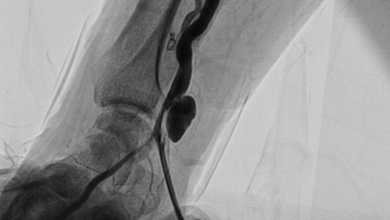Search results
Author(s):
Gina G Mentzer
,
Alex J Auseon
Added:
3 years ago
Heart failure (HF) affects more than 5 million people, representing 2 % of the population.1,2 At 40 years of age, the lifetime risk of developing HF, regardless of gender, is one in five, with an incidence of 10 per 1,000 population after the age of 65 years.1,3 Despite efforts focused toward primary prevention of HF in the areas of hypertension (HTN), diabetes, obesity, use of cardiotoxic…
View more
Author(s):
Larry A Allen
,
John S Rumsfeld
Added:
3 years ago
Hospital readmissions contribute significant clinical and economic burden to patients and payers.1 Nearly 20 % of Medicare patients are readmitted to the hospital within 30 days of discharge, with heart failure listed as the most common reason for readmission.2 Based on a more than twofold variation in institutional readmission rates adjusted for patient clinical characteristics,3 preventable…
View more
Author(s):
Gregory J Dehmer
Added:
3 years ago
The use of percutaneous coronary intervention (PCI) for coronary artery revascularization has grown considerably since the first balloon angioplasty in 1977. Improvements in equipment and drug therapies plus the development of coronary artery stents have all contributed to the growth of PCI as an alternative to surgical revascularization. Compared with the early days of balloon angioplasty, when…
View more
Author(s):
Shamai A Grossman
Added:
3 years ago
Introduction
Congestive heart failure (CHF) is an imbalance in pump function in which the heart fails to maintain the circulation of blood adequately. The most severe manifestation of CHF, pulmonary edema, develops when this imbalance causes an increase in lung fluid secondary to leakage from pulmonary capillaries into the interstitium and alveoli of the lung.
CHF can be categorized as forward…
View more
Author(s):
Keith C Ferdinand
Added:
3 years ago
Hypertension remains a prevalent, major risk factor for cardiovascular disease (CVD), affecting over one-third of adults in the uS—nearly 74 million people.1 In the uS, elevated blood pressure (BP) contributes to 69% of first myocardial infarctions (MIs), 74% of cases of congestive heart failure (CHF), and 77% of first strokes.1 The total direct and indirect cost of CVD and stroke in the US for…
View more
Author(s):
Naomi Abe
,
John D Bisognano
Added:
3 years ago
Hypertension is the most common chronic disease in the US, affecting 29% of the adult population.1 Once considered a benign, compensatory mechanism for ageing, high blood pressure (BP) is now recognised as an important risk factor for cardiovascular disease. It is estimated that inadequate BP control is responsible for 62% of cases of cerebrovascular disease, 49% of cases of ischemic heart…
View more
Author(s):
Gurleen Kaur
,
Swati Chand
,
Devesh Rai
,
et al
Added:
1 year ago
Author(s):
Barry L Carter
Added:
3 years ago
A 2011 report from the American Heart Association states that “On the basis of 2007 mortality rate data, more than 2,200 Americans die of CVD every day, an average of 1 death every 39 seconds.”1 The economic cost of cardiovascular disease (CVD) in the US was nearly $286 billion in 2007, which is 15 % of total healthcare expenditure.
There are 13 million people living with a diagnosis of CVD.2…
View more
Author(s):
Atsushi Sakamoto
,
Anne Cornelissen
,
Yu Sato
,
et al
Added:
2 years ago
Author(s):
Tanawan Riangwiwat
,
James C Blankenship
Added:
3 years ago













 « First
« First